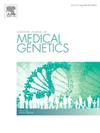从罕见病医疗设备 RE(ACT) 会议中汲取的经验教训。
IF 1.7
4区 医学
Q3 GENETICS & HEREDITY
引用次数: 0
摘要
近年来,罕见病治疗领域出现了显著增长,凸显了对多样化治疗方法的需求,以满足罕见病患者的独特需求。罕见病疗法涵盖了广泛的干预措施,包括孤儿药品、孤儿医疗器械、康复疗法和数字疗法,这些类别之间的界限越来越模糊。本文介绍了 2023 年国际罕见病大会(RE(ACT)-IRDiRC)的会议内容,深入探讨了孤儿医疗器械研发的现状,揭示了这一新兴领域的挑战和机遇。报告简要概述了该领域的不同国际立法。此外,它还重点介绍了几种典型的孤儿医疗器械。第一个例子是为患有杜兴氏肌肉萎缩症的男孩设计的外骨骼,使他们能够保持手臂功能和独立性。介绍的另一个例子是一种与检测罕见癫痫发作的应用程序相连的脑电图设备,它不仅能实时提醒护理人员癫痫发作,还能为临床医生提供客观的癫痫发作报告,帮助诊断和优化治疗。它还通过展示一款为囊性纤维化儿童设计的游戏和一个用于康复治疗的远程医疗系统,展示了游戏化和使能技术在解决罕见疾病方面的作用。这两种解决方案都旨在增进患者对自身病情的了解,加强他们的自我管理。总之,本文强调了对以患者为中心的孤儿和儿科医疗设备的迫切需要,以便为罕见疾病患者提供治疗选择。它强调了现有器械对提高罕见病患者生活质量的影响,并强调有必要为该领域的研发提供更多激励和支持。本文章由计算机程序翻译,如有差异,请以英文原文为准。
Lessons learned from the RE(ACT) conference on medical devices for rare diseases
The field of rare disease therapeutics has witnessed significant growth in recent years, highlighting the need for diverse therapeutic approaches to cater to the unique needs of individuals with rare diseases. Rare disease therapies encompass a broad spectrum of interventions, including orphan medicinal products, orphan medical devices, rehabilitative therapies, and digital therapeutics, with the lines between these categories blurring. This paper covers the session of the RE (ACT)-IRDiRC Conference 2023 and delves into the landscape of orphan medical device research and development, shedding light on the challenges and opportunities in this burgeoning field. It provides a short overview of the different international legislations in the field. In addition, it highlights several exemplary orphan medical devices. The first example is an exoskeleton for boys with Duchenne Muscular Dystrophy, enabling them to maintain arm functionality and independence. Another example presented was an EEG device linked to an app detecting seizures in rare epilepsy conditions, which alerts caregivers to seizures in real-time but also facilitates objective seizure reporting for clinicians, aiding in diagnosis and treatment optimization. It also showcases the role of gamification and enabling technologies in addressing rare diseases, by showing a game designed for children with cystic fibrosis, and a telemedicine system for rehabilitation therapy. Both solutions aim to improve patients' understanding of their conditions and enhance their self-management. In conclusion, this paper underscores the critical need for patient-centric orphan and pediatric medical devices to provide therapeutic options for individuals with rare diseases. It highlights the impact of existing devices on enhancing the quality of life for rare disease patients and emphasizes the necessity for greater incentives and support for research and development in this field.
求助全文
通过发布文献求助,成功后即可免费获取论文全文。
去求助
来源期刊
CiteScore
4.10
自引率
0.00%
发文量
193
审稿时长
66 days
期刊介绍:
The European Journal of Medical Genetics (EJMG) is a peer-reviewed journal that publishes articles in English on various aspects of human and medical genetics and of the genetics of experimental models.
Original clinical and experimental research articles, short clinical reports, review articles and letters to the editor are welcome on topics such as :
• Dysmorphology and syndrome delineation
• Molecular genetics and molecular cytogenetics of inherited disorders
• Clinical applications of genomics and nextgen sequencing technologies
• Syndromal cancer genetics
• Behavioral genetics
• Community genetics
• Fetal pathology and prenatal diagnosis
• Genetic counseling.

 求助内容:
求助内容: 应助结果提醒方式:
应助结果提醒方式:


